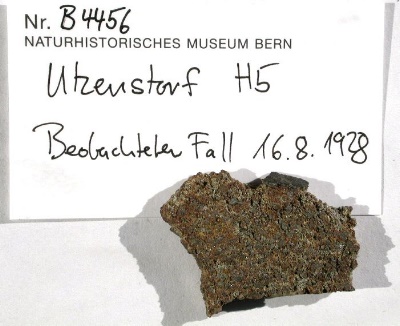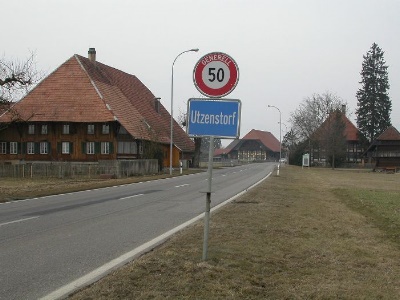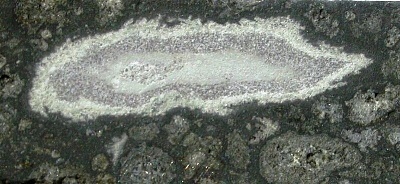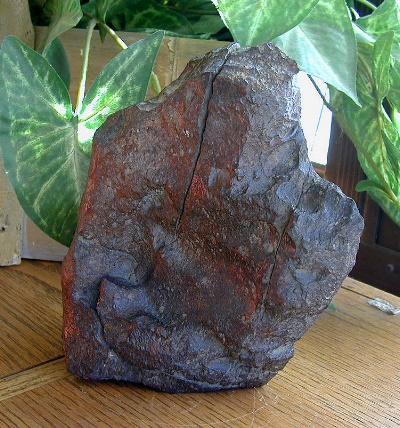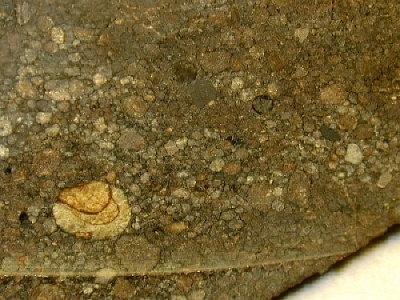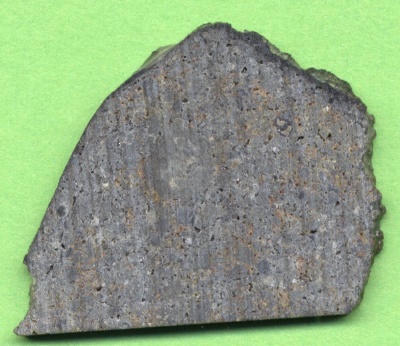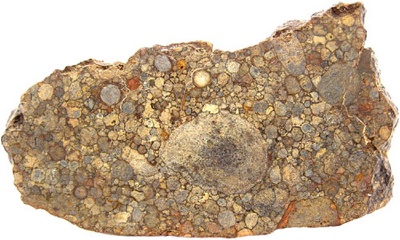IMCA Insights – January 2007
Our Favorite Chondrites, Part 1
by the IMCA Board of Directors
This month, the members of the IMCA Board of Directors got together to compare notes and we all picked our favorite chondrites. Since we are a very eclectic bunch, the choice covers most of the globe. In this issue we'd like to present you with the first five favorites, and in the next issue, in February 2007, we will cover the second half of the Board's favorite chondrites. If time and circumstances allowed, we will get together again sometime during 2007 to pick and publish our favorite achondrites, irons, and stony-irons.
Peter Marmet:
My favorite chondrite is without doubt the Utzenstorf H5 chondrite which fell in 1928 August 16 at 19:00 hrs during a thunderstorm. Utzenstorf is only 20 kilometers from Bern where I live and is only 5 kilometers from where I work ... so, from my workplace I can almost see the field where it fell 79 years ago. On impact the stone broke into 3 pieces, totaling 3422 grams. They where discovered and recovered eleven days after the fall during fieldwork and then brought to the Natural History Museum in Bern where the main mass still resides today.
A 8.7g slice of Utzenstorf, Coll. Peter Marmet
You find pieces of the Utzenstorf meteorite only in a very few museums and in less than half a dozen private collections worldwide. I was able to get the last two pieces - 7.5 and 8.7 grams - that were traded with a French collector before the museum decided that it is no longer possible to trade Swiss meteorites. So... no, they are not for sale, sorry. The Utzenstorf meteorite is - until today - the last observed meteorite fall in Switzerland... so the next one is overdue ...
This part of the
small village hasn't changed much since the
meteorite fall in 1928.
Norbert Classen:
My favorite chondrite is Allende, a carbonaceous chondrite of the CV group which fell on February 8, 1969, in Chihuahua, Mexico. I love it not just because it fell only a few months prior to the first manned Moon landing, not just because it represents a rare type, and not just because it represents one of the most impressive, and largest witnessed falls in human history. I also love it for its magnificent CAIs (calcium-aluminium inclusions) which represent some of the oldest matter known.
A bolide-shaped,
layered CAI in the CV3 chondrite Allende
(with dimensions of about 12x2.5mm)
The CAIs have been intensely studied in the Allende meteorite, and they were found to contain fine-grained, microscopic diamonds. These nano-diamonds exhibit odd isotopic signatures that point to an origin outside of our own solar system. They are thought to be genuine interstellar grains that are older than the Earth and the Sun, and they are probably the product of a nearby supernova, of a dying star that made his last breath when our own system formed. Traces of this supernova have been trapped within the CAIs and preserved in Allende up to this day. You just got to love this meteorite!
Anne Black:
Right now my favorite chondrite is Santa Vitoria do Palmar, but I change favorite very often. I particularly like the fact that Santa Vitoria has a well documented history. We know everything about it, except of course where it comes from. We know that it fell on June 25, 1997 at 7am, in plain sight of hundreds of people in southern Brazil and northern Uruguay. We know that the first fragment was not discovered until March 2003, by a fossil hunter searching through the local lagoons, and the rest of it was found nearly a year later in February 2004. Because the discoveries were made by caring people who took the time to ask, everything about this meteorite was done very nearly right: the local Museum received the main mass, scientists were able to study it at leisure, and there was still enough to satisfy collectors the world over.
One of the masses of Santa Vitoria do Palmar
And the meteorite itself is very pretty, with large bright colorful chondrules and a crust that looks like dark chocolate frosting on a cake! What more could you possibly ask for?
Close-up showing the texture of Santa Vitoria do Palmar
Andrzej Pilski:
How can I choose a favorite chondrite? Every fresh chondrite is my favorite one. OK, let's say it could be Baszkówka L5. I can still remember when Dr. Stepniewski presented me with a photo of an incredibly oriented meteorite. When he said it was not from a museum but it had fallen near Warsaw, Poland a few months earlier, I was not sure I could believe him. But it was true! A few days later I was holding in my hands the most beautiful meteorite I had ever seen in my life. Its beauty was so stunning that its photo was published in the Meteoritical Bulletin, a rare occurrence. However its incredible shape turned out to be just an appetizer. Along one edge a small fragment of fusion crust was chipped off and I could see an odd-looking kind of rock. Apparently it was a chondrite, but different from any chondrite I had seen before. It was highly porous but very hard - something like a welded, pyroclastic rock.
After detailed examination it seemed to my colleagues and me, that my first impression was right. We concluded that the Baszkówka chondrite originated from a collision between two partially melted planetesimals in the very beginning of our solar system. The collision produced a cloud of droplets and fragments of broken rocks. The cloud, like the one above a volcano, was dense enough to prevent fast cooling, and droplets could crystallize into chondrules and slowly fell down together with broken fragments and aggregates of grains and still hot, plastic metal and troilite to form a hot pyroclastic rock. All constituents of the rock were welded together leaving empty spaces between, where later small crystals could form from vapors. The Baszkówka chondrite was described in a paper published in Meteoritics and Planetary Science in 2003.
A small 2g slice of Baszkówka, 28x23mm
Now I keep in my reference collection only a small 2 g, 28x23 mm slice of Baszkówka with a large chondrule, about 6 mm in diameter. A much larger slice is on display in my planetarium. I found that the unique texture of Baszkówka closely matches that of Mount Tazerzait, an L5 chondrite, so Mount Tazerzait is my second favorite.
Jeff Kuyken:
NWA 2892 was discovered in the Sahara Desert, Africa during 2004. A single stone weighing a mere 104g was found and has since been classified as a very rare transitional H/L3 Chondrite. This meteorite has a Shock Rating of 3 and a Weathering Level of 3. Later in 2006, another stone weighing 75g was also discovered. Clearly, this meteorite is unusual with its sea of closely knit small chondrules along side the other much larger ones (Macrochondrules). In fact the largest in this specimen is also the largest of any in the Meteorites Australia Collection, measuring a massive 1.35cm x 1.1cm at widest points. This slice is only 3mm thick and curiously this macrochondrule is not visible on the reverse side. Another extraordinary chondrule present in this slice is observable in the top right of this image. It is an elliptical macrochondrule of which about 40% is missing. By extrapolating the shape, the dimensions are approximately 3.5mm x 7.5mm giving it a ratio of about 2.15:1.
Full slice of NWA 2892 with impressive macrochondrules
It is under magnification that the true nature and beauty of this meteorite comes out! The most noticeable oddity is the complete lack of a matrix as there is nothing between the chondrules and they seem to occur "wall-to-wall"! Not only that, but it seems the chondrules were plastic (changing/developing) when they merged to form this peculiar meteoritic body. Many of the chondrules have formed to fit like a jigsaw puzzle with the others surrounding it which is most likely why there does not appear to be any matrix present. A truly unique meteorite! This specimen is part of the Meteorites Australia Collection (MA.05.0069).
More of our favorite chondrites will be published in the February 2007 issue of IMCA Insights - stay tuned, and thanks for your interest!
•
IMCA Home Page •
IMCA Code of Ethics •
IMCA Member List
•
Join IMCA •
IMCA Meteorite Info
